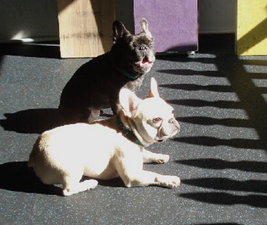One of the most profound responsibilities we take on as dog owners is, literally, life and death. How do you know you’re making the best dog decision?
We’re not talking about euthanasia today. Instead, it’s the incredible uncertainty of making treatment decisions that not only impact your dog’s longevity, but quality of life as well.
Faced with choices
A friend of ours is going through it right now with her dog. The dog is nine years old, and just had surgery to remove a lump that, unfortunately, turned out to be her third mast cell cancer. Now our friend is facing some tough choices.
The veterinarian who’s a surgical specialist wants to do another surgery to make sure all the cancerous tissue is removed. A general veterinarian did the initial surgery and did get “clean margins.”
Another veterinarian who’s an oncologist wants to use both radiation and chemotherapy to treat the dog.
To make matters more confusing, my friend’s daughter is a veterinarian. She told her mom that radiation is often very hard on dogs and affects their quality of life.
Of course none of them can predict a positive – or negative – outcome of their recommended treatment.
Even more complex
Added onto all this, our friend is also into natural health and wellness. She’s a yoga instructor and conscientious in her diet and lifestyle.
Not to mention that with the resources available today, she’s been researching all the possibilities of treatment, including dietary supplements, additions, and possible triggers for this type of cancer.
It can get overwhelming. What’s the right thing to do for her dog? All of the professionals she’s consulted are making recommendations based on their expertise and interest in helping her dog. All are acting in good faith. And all of them want to cure her dog. But all of them advocate for what they know best.
Step back and breathe

Our friend really just needed an opportunity to talk things out, think about her choices, and her sweet dog. We’ve been friends a long time through our mutual interest in dogs and dog training. There is no “right” answer that will guarantee her dog’s longevity or health. When we first started to chat, she sounded pessimistic, as if she was expecting her dog to die any time. And then she looked over and saw her dog happily snoozing in a ray of sunshine, and realized there’s still time.
We talked over lots of options and our friend has pretty much decided what’s right for her and her dog. She’s decided to do everything that will do no harm. The supplements she’s trying may not help, but won’t hurt. For now, she’s ruled out additional surgery and radiation. Her dog has had one chemotherapy treatment and dealt with it well, so she’ll stay the course as long as that holds true.
Results not guaranteed
With our dogs unable to tell us how they feel, all dog owners take their cues from the dog’s attitude and behavior. It’s up to us to read the signals and figure out what’s going on with them. It’s not easy, especially since we never know if we’re making the “right” decision. It boils down to choosing the best you can. And living with the consequences.
When faced with difficult choices, step back and breathe. Talk to friends and family as well as the experts. Do some poking around reliable online sources – but make sure those sources are reliable. And then make the best dog decision you’re able.
Enjoyed this post? Click here to sign up for the weekly newsletter and never miss another!









